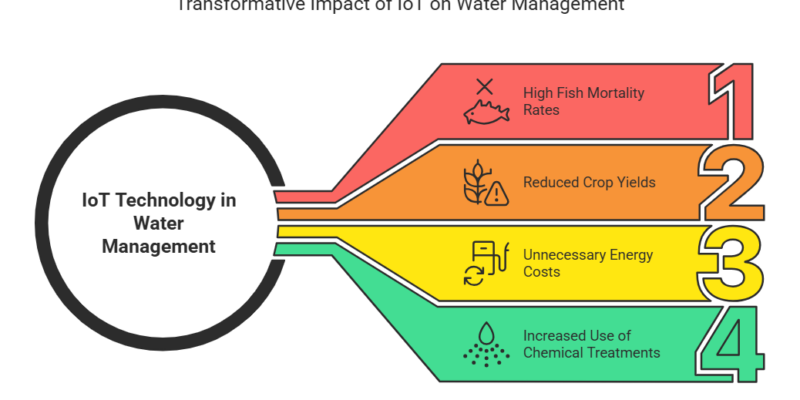Revolutionizing Water Management: How IoT is Transforming Aquaculture and Farming
Water is the lifeline of agriculture and aquaculture, but maintaining its quality has always been a challenge. Traditional monitoring methods rely on manual testing, guesswork, and delayed responses, often leading to poor yield, high mortality rates, and energy waste. But what if water quality could be monitored and controlled in real-time, automatically?
This is where IoT-based Water Quality Monitoring & Smart Peripheral Control is revolutionizing the industry. By combining real-time sensor data, automation, and remote access, farmers and aquaculture professionals can optimize water conditions, reduce energy consumption, and improve sustainability—all while increasing yield and profits.
Let’s explore how this technology is reshaping the future of aquaculture and farming.

The Water Quality Crisis in Farming & Aquaculture
Water quality is the single most important factor in aquaculture and irrigation-based farming. If pH, dissolved oxygen (DO), ammonia levels, or temperature deviate from the optimal range, it can cause:
❌ High fish mortality rates in aquaculture
❌ Reduced crop yields in agriculture
❌ Unnecessary energy costs from continuous aerator and pump operation
❌ Increased use of chemical treatments and water wastage
For years, farmers have relied on manual water testing—an inefficient and outdated approach that often leads to reactive problem-solving rather than proactive management. IoT technology changes this entirely.
How IoT-Based Water Quality Monitoring Works
With IoT-powered automation, real-time sensors are placed in water bodies (ponds, tanks, irrigation systems) to continuously measure key water parameters like:
✅ pH Levels – Prevents water acidity that can harm crops and aquatic species.
✅ Dissolved Oxygen (DO) – Ensures fish survival and prevents suffocation.
✅ Ammonia Levels – Reduces toxic buildup in aquaculture environments.
✅ Water Temperature – Keeps conditions optimal for farming and aquaculture.💡 What’s the Game-Changer? This system automatically adjusts water conditions using smart peripheral controls, such as:
✔ Aerators – Activates when oxygen levels drop.
✔ Pumps & Motors – Runs only when needed, reducing energy waste.
✔ Remote Manual Control – Farmers can monitor & adjust settings via a mobile app or web dashboard.
Instead of relying on manual intervention, the system ensures that water remains at optimal levels 24/7—without human effort.
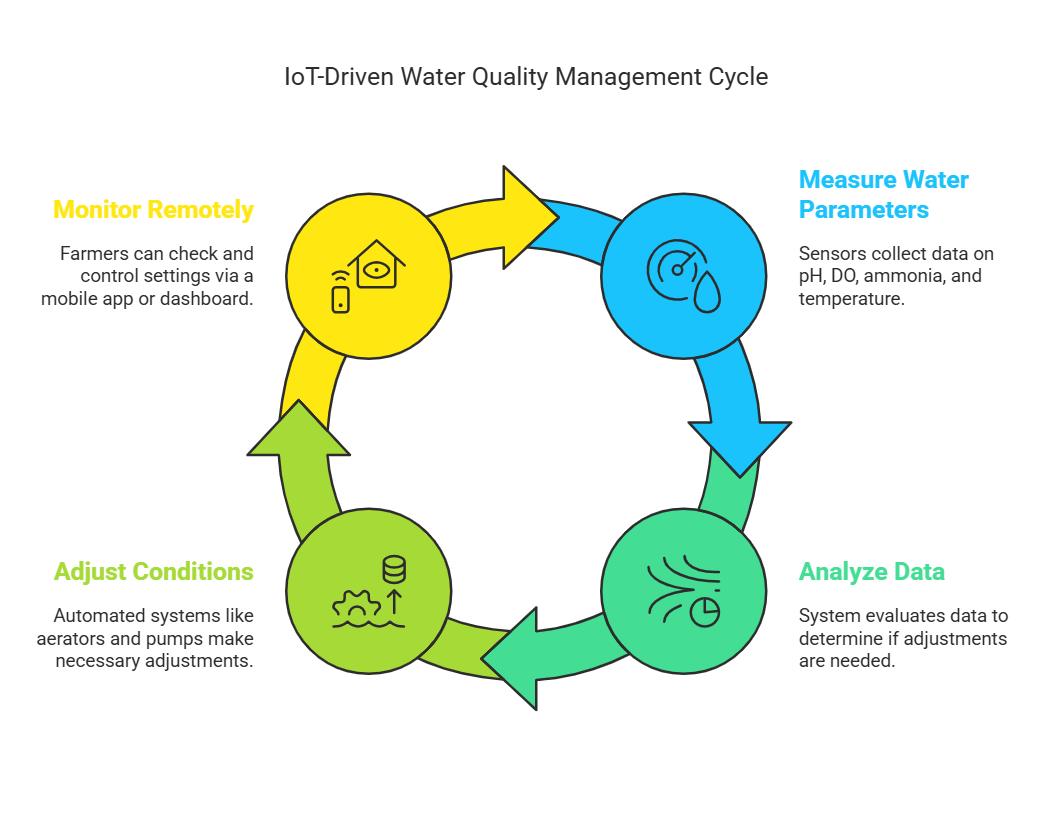
Impact & Success Stories
The adoption of IoT-based water management systems has already delivered incredible results:
📍 Deployed across 8 districts, benefiting 30 farmers.
🤝 Collaboration with 6 NGOs to support sustainable farming initiatives.
⚡ Achieved up to 20% energy savings by reducing unnecessary aerator and pump usage.
These numbers highlight real-world efficiency—not just in cost savings but in productivity, sustainability, and yield improvement.
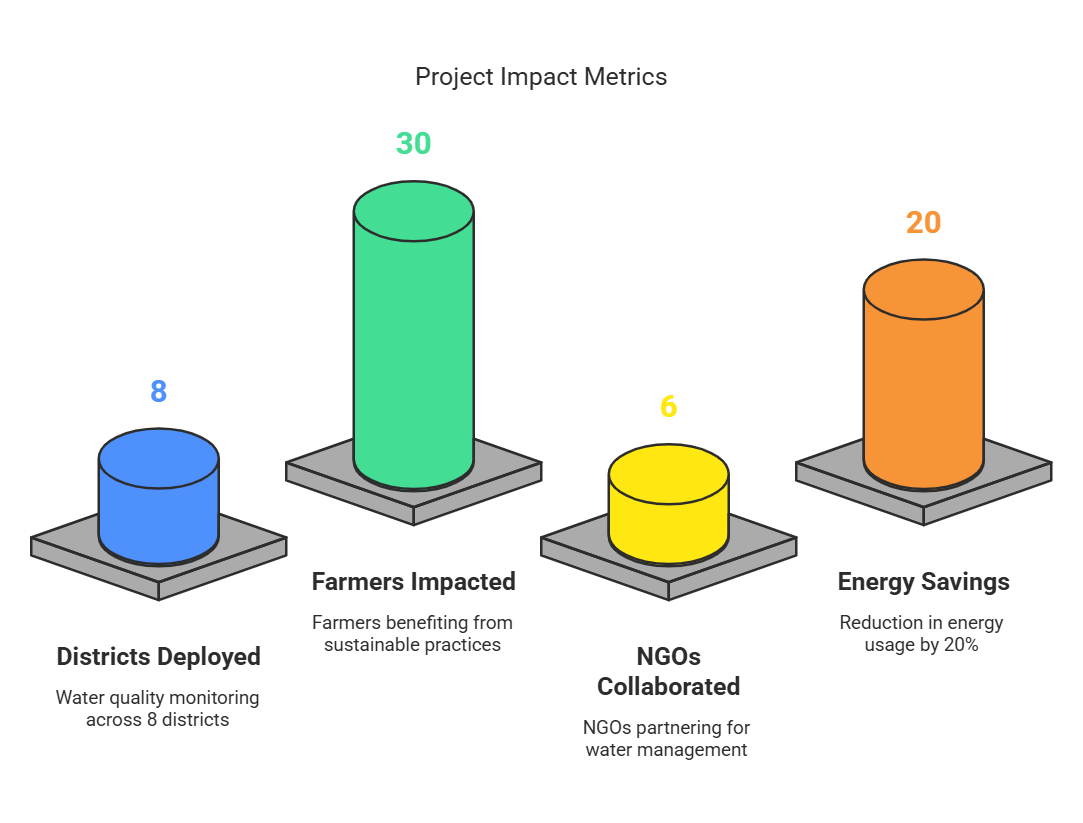
The Advantages of IoT in Water Management
1. Higher Yield & Better Survival Rates
🚀 Stable water quality leads to healthier crops and aquatic life.
🚀 Automated adjustments prevent fish deaths due to poor oxygen levels.
🚀 Early detection of water imbalances prevents sudden losses.
📌 Example: If DO levels drop below safe limits, the system instantly activates aerators—preventing fish suffocation and increasing survival rates.
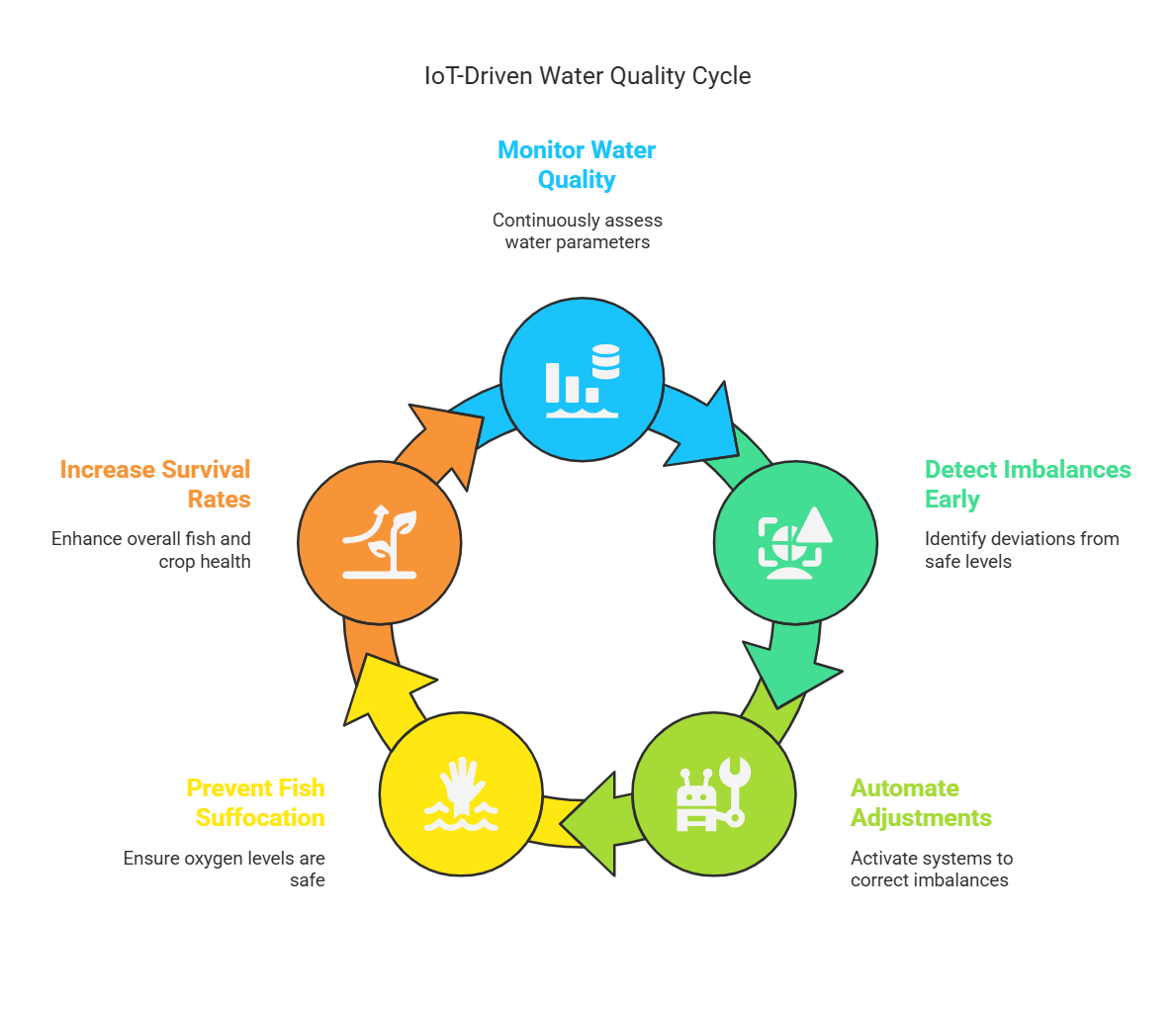
2. Energy Savings & Lower Costs
💡 Up to 20% energy savings by running aerators and motors only when needed.
💡 Lower electricity bills and maintenance costs due to smart scheduling.
💡 Optimized pump operation reduces water wastage.
📌 Example: Instead of running aerators 24/7, the system intelligently activates them only when oxygen levels drop, reducing power consumption significantly.
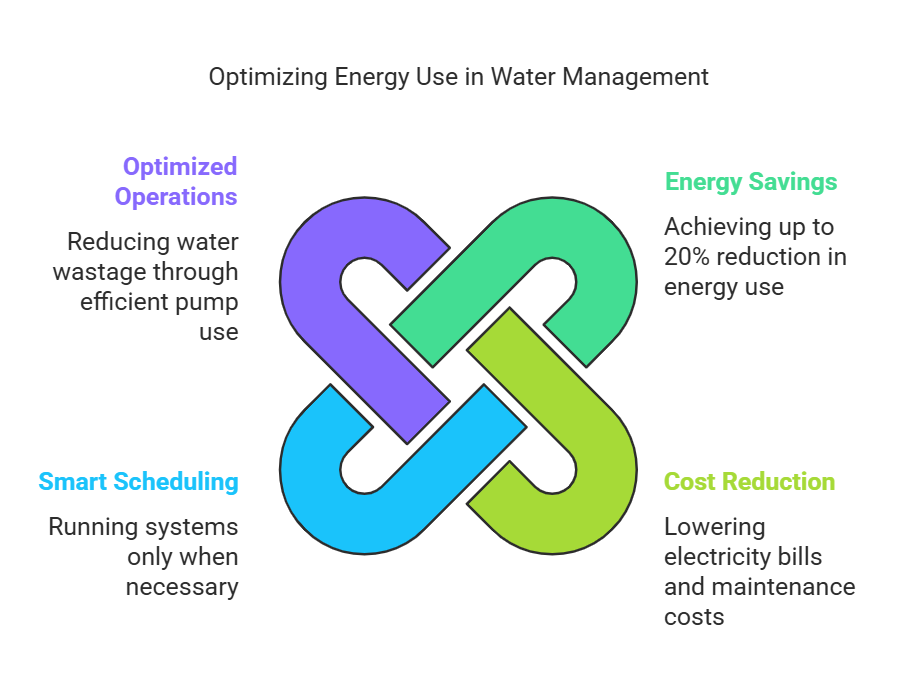
3. Proactive Water Management
✅ Instant alerts notify farmers of any critical changes in water quality.
✅ Predictive analytics help forecast potential water issues before they occur.
✅ Historical data tracking allows farmers to optimize long-term management strategies.
📌 Example: Instead of waiting for fish deaths to signal poor water quality, farmers receive real-time alerts before conditions become dangerous.
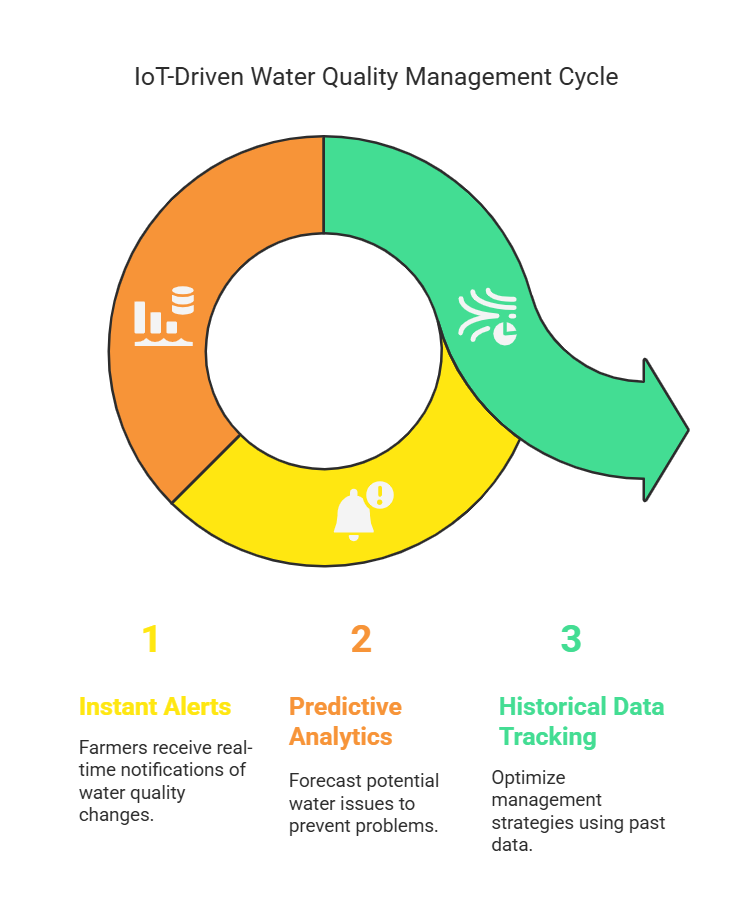
4. Sustainability & Environmental Impact
🌱 Reduces chemical treatments by maintaining optimal conditions naturally.
🌱 Lowers water waste by ensuring efficient usage.
🌱 Supports the UN’s Sustainable Development Goals (SDGs).
This technology directly contributes to:
- SDG 6 (Clean Water & Sanitation) – Ensuring safe water for farming and aquaculture.
- SDG 7 (Affordable & Clean Energy) – Cutting unnecessary electricity use.
- SDG 9 (Industry, Innovation & Infrastructure) – Leveraging IoT for smarter agriculture.
- SDG 12 (Responsible Consumption & Production) – Minimizing waste and optimizing resources.
- SDG 13 (Climate Action) – Reducing carbon emissions by lowering energy consumption.
📌 Example: A farmer using this system reduced his electricity costs by 18% while maintaining an optimal fish survival rate of 98%.
The Future of IoT in Water Management
With climate change, unpredictable weather patterns, and increasing water scarcity, smart water management is no longer optional—it’s necessary. As more farmers and aquaculture businesses adopt IoT-driven solutions, we can expect:
🔹 AI-powered predictive analytics for water quality forecasting.
🔹 Machine learning-driven optimizations for aerator & pump efficiency.
🔹 Integration with solar-powered systems for 100% clean energy operation.
This isn’t just about technology; it’s about reshaping the future of farming and aquaculture with smarter, data-driven decisions.

Final Thoughts
IoT-based water quality monitoring is more than just automation—it’s a revolution. By integrating real-time data, AI-driven automation, and remote accessibility, this system empowers farmers with complete control over their water conditions.
The result?
✅ Higher yields
✅ Lower energy costs
✅ Better sustainability
✅ Increased profits
💡 Are you ready to transform your farming or aquaculture business? It’s time to ditch outdated methods and embrace smart water management with IoT-driven solutions.




